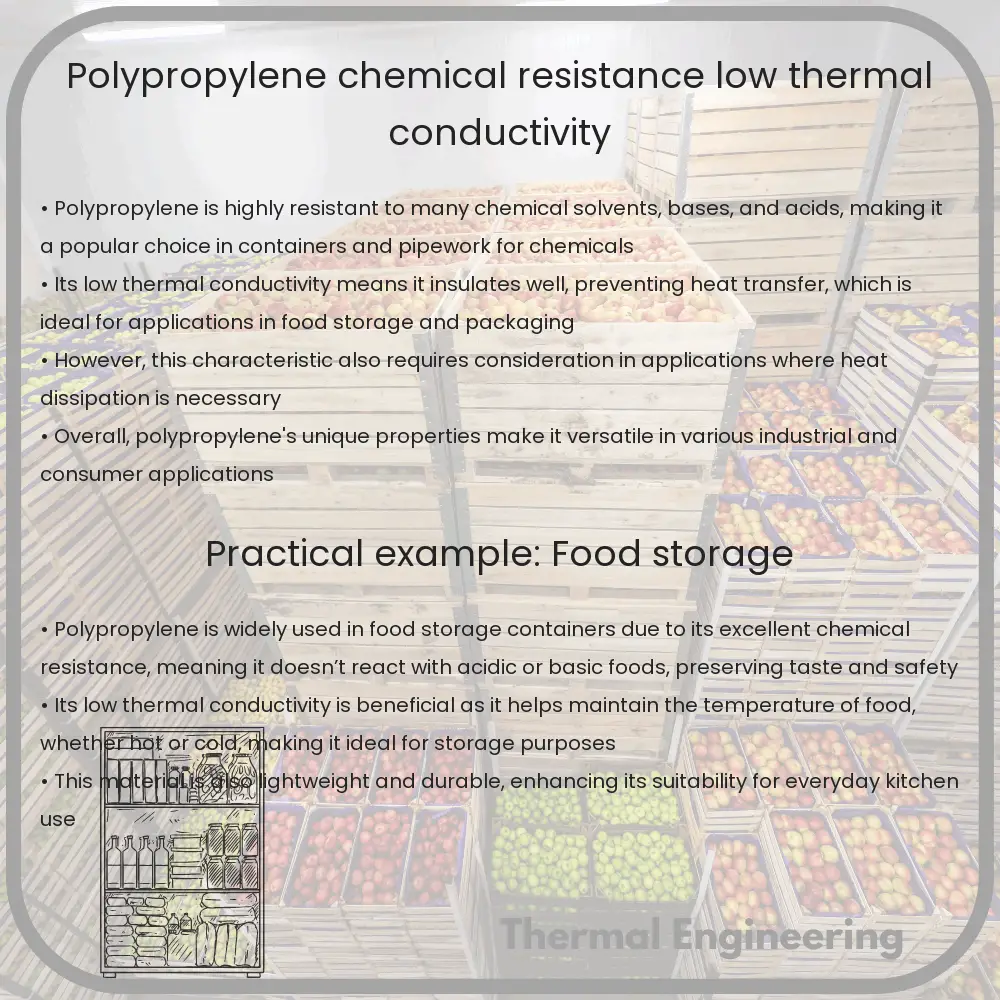Explore the features of polypropylene (PP), focusing on its chemical resistance and low thermal conductivity, as well as its diverse industrial applications.

Understanding Polypropylene: Chemical Resistance and Low Thermal Conductivity
Polypropylene, often abbreviated as PP, is a type of plastic that is extensively used in various industries due to its strong chemical resistance and low thermal conductivity. This thermoplastic polymer is notable for its versatility and effectiveness in applications ranging from packaging and labeling to automotive components and consumer goods.
Chemical Resistance of Polypropylene
Polypropylene is highly resistant to many chemical solvents, bases, and acids. This durability in diverse chemical environments makes it extremely useful in containers and pipework for chemicals. The polymer structure of polypropylene does not react with water, detergents, acids, and bases, which helps it maintain its form and integrity even when exposed to harsh substances over extended periods.
- Acids: Polypropylene is generally resistant to most acids, making it ideal for use in the manufacturing of containers that store vinegar, citric acid, and even some industrial cleaning agents.
- Bases: High resistance to basic substances such as sodium hydroxide (lye) or potassium hydroxide makes polypropylene a preferred choice for containers and pipes in these environments.
- Solvents: Although polypropylene is resistant to many solvents, it does have limited resistance to chlorinated hydrocarbons and aromatic compounds, which can sometimes lead to swelling or dissolution.
This chemical resistance also contributes to the polymer’s longevity and its ability to be reused and recycled, thereby reducing waste and environmental impact.
Low Thermal Conductivity of Polypropylene
With a thermal conductivity as low as 0.1-0.22 W/m*K (watts per meter Kelvin), polypropylene is characterized by its poor ability to conduct heat. This property is particularly valuable in applications requiring insulation or the protection of contents from external temperature changes.
- Insulation: The low thermal conductivity makes polypropylene a good insulator, widely used in containers that store hot or cold substances. This includes everything from hot food packaging to ice cream tubs.
- Energy efficiency: Polypropylene’s insulating properties significantly contribute to energy savings, making it a popular choice in industrial and residential insulation systems.
Applications of Polypropylene
Due to its unique properties, polypropylene has a wide range of applications:
- Packaging: Used in containers and labels for its barrier properties and chemical resistance.
- Textiles: In the form of fibers and nonwoven fabrics for bags, apparel, and upholstery.
- Automotive: Used in the manufacturing of battery cases and bumpers due to its resilience and resistance to chemical corrosion.
- Consumer Products: Popular in the manufacture of dishwasher safe containers, toys, and garden tools.
Polypropylene remains a favorite choice among engineers and designers due to its balance of properties, cost-effectiveness, and recyclability. Its ability to resist chemical degradation while insulating against heat makes it indispensable in modern manufacturing and industry.